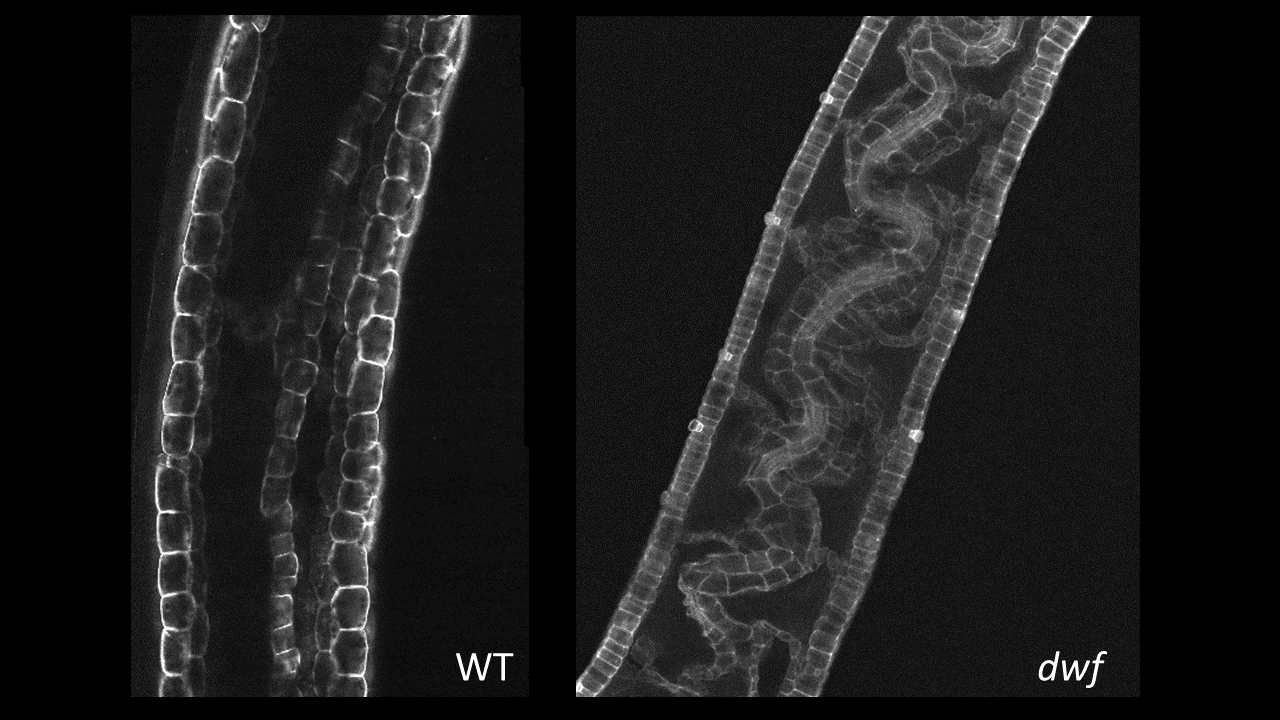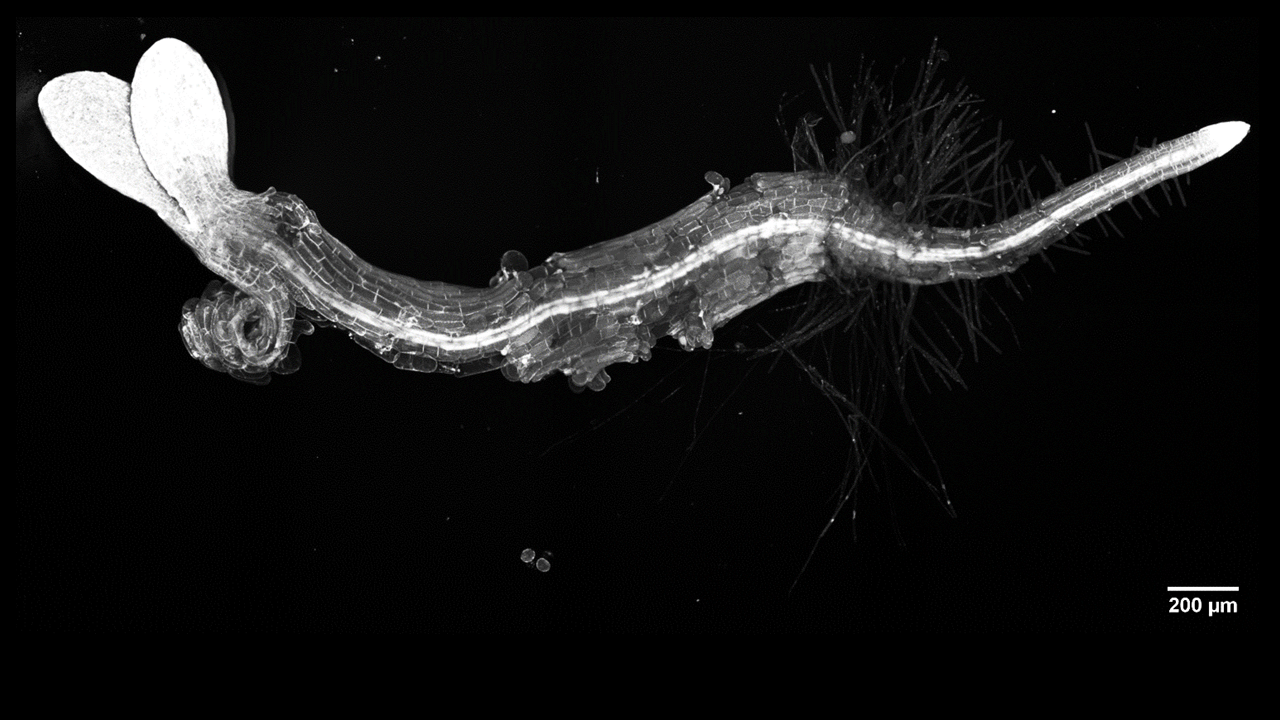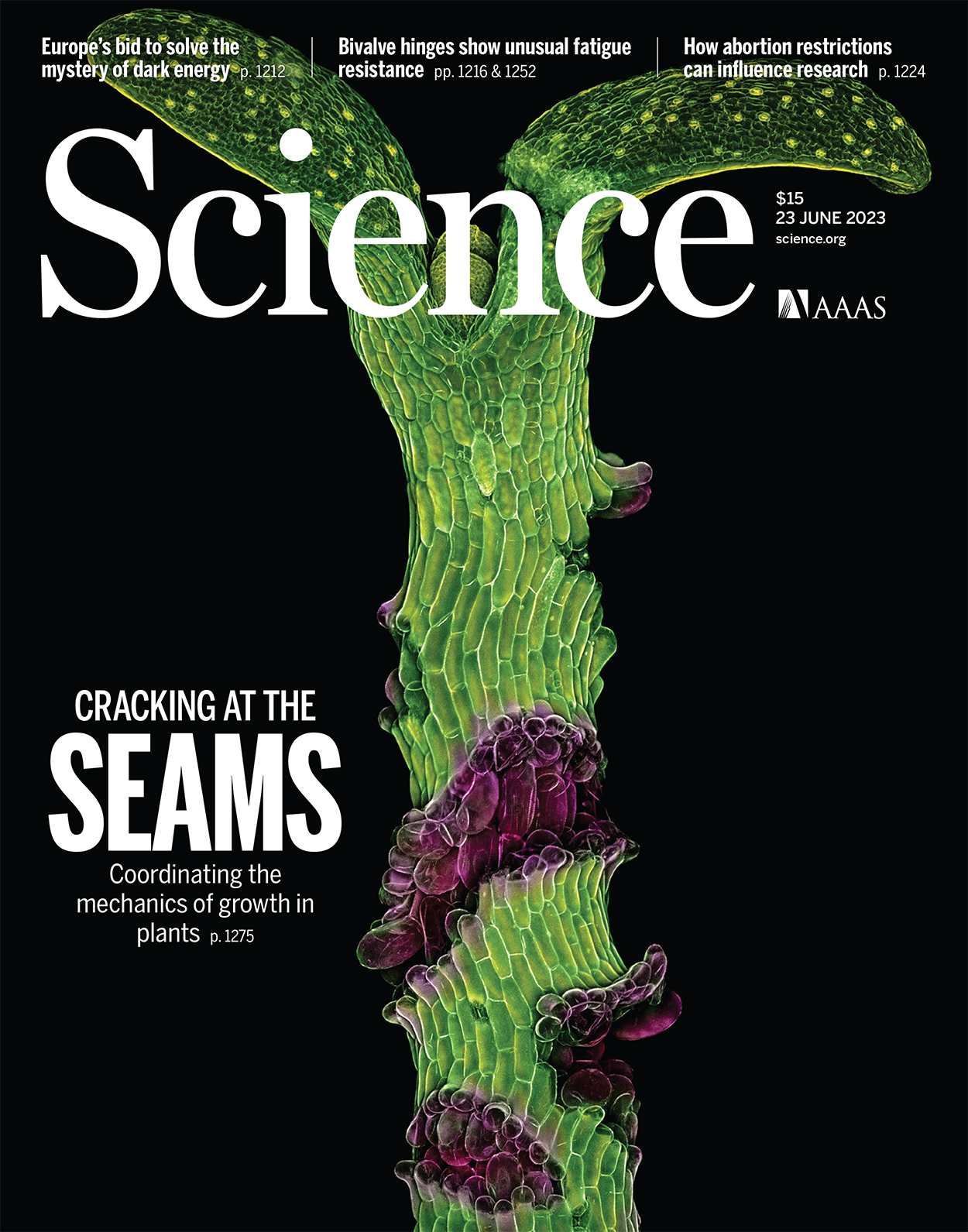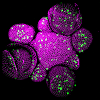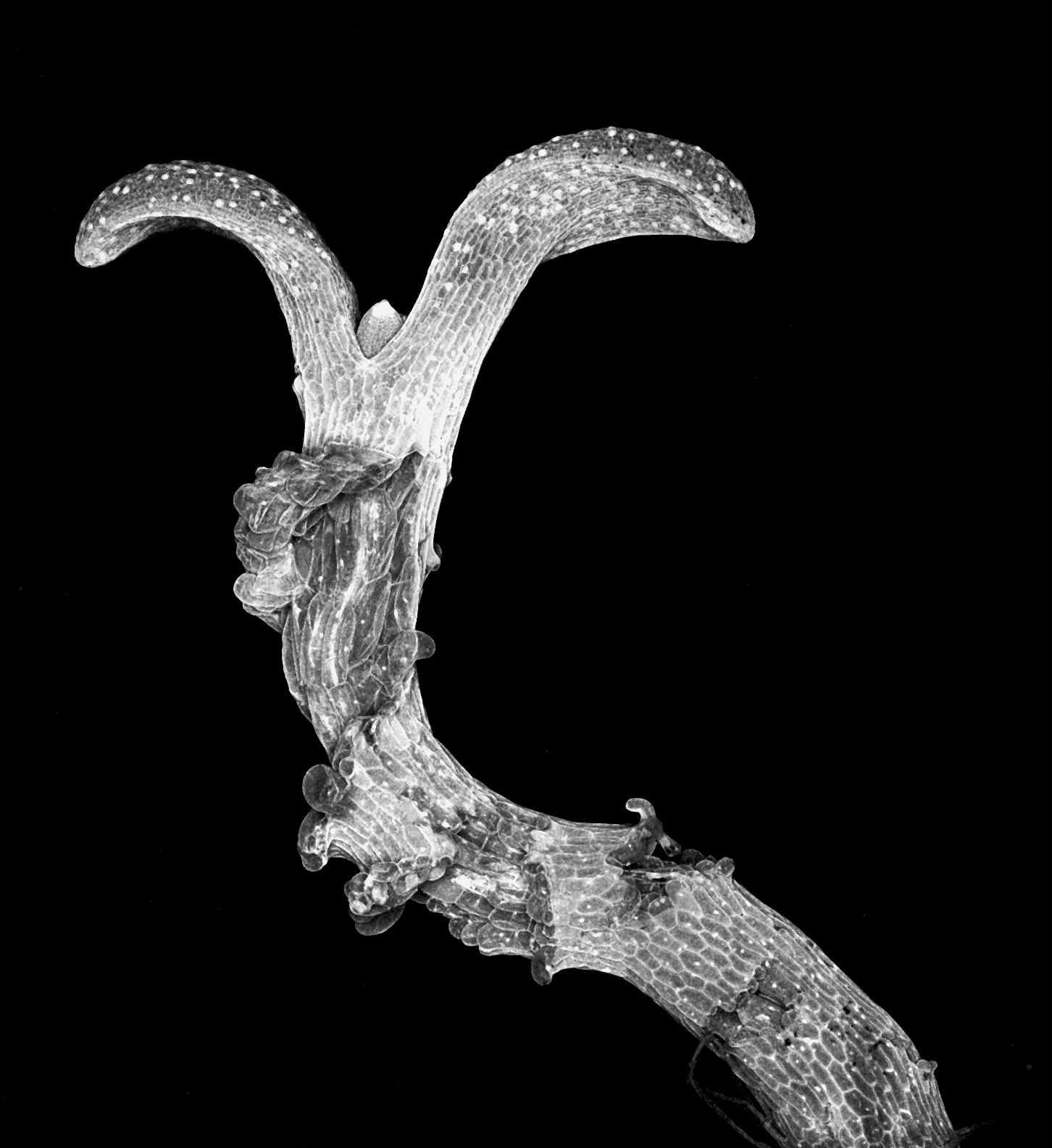
Confocal image of Arabiopsis hypocotyl treated with brassinosteroid inhibitor. The seedling shows cracks appearing in the epidermis. Image by James Fitzsimons.
Internal twists in a mutant carnivorous plant reveal how genes control growth coordination via tissue mechanics
An aquatic carnivorous plant has helped to explain how plants avoid cracking up under the stresses and strains of growth.
Researchers at the John Innes Centre and Sainsbury Laboratory Cambridge University (SLCU) have found the molecular basis behind the control of growth between the cell layers boils down to a group of plant hormones called brassinosteroids.
Dr Robert Kelly-Bellow and Karen Lee in the group of Professor Enrico Coen at the John Innes Centre, started with a curious observation in a dwarf mutant of the carnivorous plant Utricularia gibba.
The stems of this floating plant are filled with airspaces and this hollowness means that the vascular column inside the stem can buckle when under stress. This effect would not be apparent in most plants, which have solid stems.
The researchers saw that in a dwarf mutant the central column was wavy instead of straight. They hypothesised that this wobbly spine was caused by an internal conflict, a disparity between what was happening inside the plant stem and the epidermis or skin. Computational modelling by coauthor Dr Richard Kennaway showed this idea could account for what was observed.
“We realised that in these types of dwarf, only the epidermis, the skin of the stem, wants to be short, the internal tissue still wants to be long hence the buckling effect,” explains Professor Enrico Coen of the John Innes Centre, an author of the study which appears in Science.
Internal phenotype of U. gibba wild type and dwarf mutants
“This was a surprise - previously people had thought that dwarf varieties, which are very important in agriculture, would be dwarf because everything in the stem is affected to grow less but in fact it's just the skin in this case, creating a sort of straitjacket.”
Further investigations revealed that the Utricularia gibba dwarf mutant lacked a growth hormone called brassinosteroid.
They theorized that this hormone normally allows the skin to stretch, giving a more forgiving straitjacket and allowing the plant stem to elongate.
To test this idea, they used a mutant in the model plant Arabidopsis that weakens the glue between cells, to see if reducing brassinosteroid would cause major cracks to form in the skin of the stem as a result of the stresses.
“That is exactly what we saw," explains Professor Coen. “Normally an Arabidopsis stem with weakened glue will crack slightly because the hormone is there to loosen the straitjacket. But when the hormone was missing, the skin was completely ripped off and the plant was almost skinless.”
Computational modelling by coauthor Professor Richard Smith showed brassinosteroid hormone was likely easing the straitjacket by loosening fibres in the epidermal cell walls.
“Plant cells are stuck together and are forced to behave in a coordinated way just by their pectin, their glue, that binds them. What we show in this study is that this is an incredibly powerful force; the glue is so strong you only need to change growth in one layer and the other cells will follow,” explains Professor Coen.
“Previous studies have emphasised that plants send molecular signals to grow in a coordinated way, and this is still a part of the explanation. But what our study shows is that the glueyness of plant cells is also a vital component in coordinating growth. Sticking together is very important.”
Co-author Dr Christopher Whitewoods at the Sainsbury Laboratory Cambridge Unviersity (SLCU) emphasises the potential importance of these findings for future research. “The fact that mechanical interactions between cell layers control growth in the stems of two wildly different species raises the question of whether they control other aspects of plant development, such as the complex internal patterning of leaves. We are excited to test whether this is the case”.
Confocal image of Arabiopsis hypocotyl treated with brassinosteroid inhibitor. The seedling showing the epidermis peeling away from the stem.
The findings shed light on dwarfing varieties of crops, like wheat and rice, which underpin agriculture’s Green Revolution, explaining how genes control their growth and how we might improve their efficiency in future.
Their findings also relate to developmental processes in animals, such as formation of crocodile skin cracks and shaping of the intestine, where mechanical interactions between layers are also thought to play a part.
Many hypotheses look promising to begin with but then fail to last the full experimental course. Not so in this case, reflects Professor Coen.
“The first glimpse of the wobbly tissue in our dwarf aquatic plant was exciting because as soon as we saw that, we had an idea of what might be going on. But the biggest excitement came from testing the idea in a completely different system.
“Nature is elusive. Ninety-nine percent of nice ideas fall flat on their face when put to a critical test. But occasionally an idea survives and you then know that nature has revealed one of its secrets to you,” he says.
Brassinosteroid co-ordinates cell layer interactions in plants via cell wall and tissue mechanics, appears in Science.
Reference
Robert Kelly-Bellow, Karen Lee, Richard Kennaway, J. Elaine Barclay Annabel Whibley, Claire Bushell, Jamie Spooner, Man Yu, Paul Brett, Baldeep Kular, Shujing Cheng, Jinfang Chu, Ting Xu, Brendan Lane, James Fitzsimons, Yongbiao Xue, Richard Smith, Christopher D. Whitewoods, Enrico Coen, Brassinosteroid coordinates cell layer interactions in plants via cell wall and tissue mechanics. Science 380,1275-1281(2023).
https://www.science.org/doi/10.1126/science.adf0752
Science cover: An Arabidopsis seedling with weakened cell adhesion is treated with an inhibitor of the growth hormone brassinosteroid. Brassinosteroid inhibition slows epidermal growth, which constrains growth of internal tissue, causing mechanical stresses and opening cracks as epidermal cells are pulled apart. Similar stresses produce internal contortions of carnivorous plant, Utricularia gibba, illustrating how mechanical connectivity between cells coordinates growth between cell layers.
Credit: Rob Kessler and Robert Kelly-Bellow

